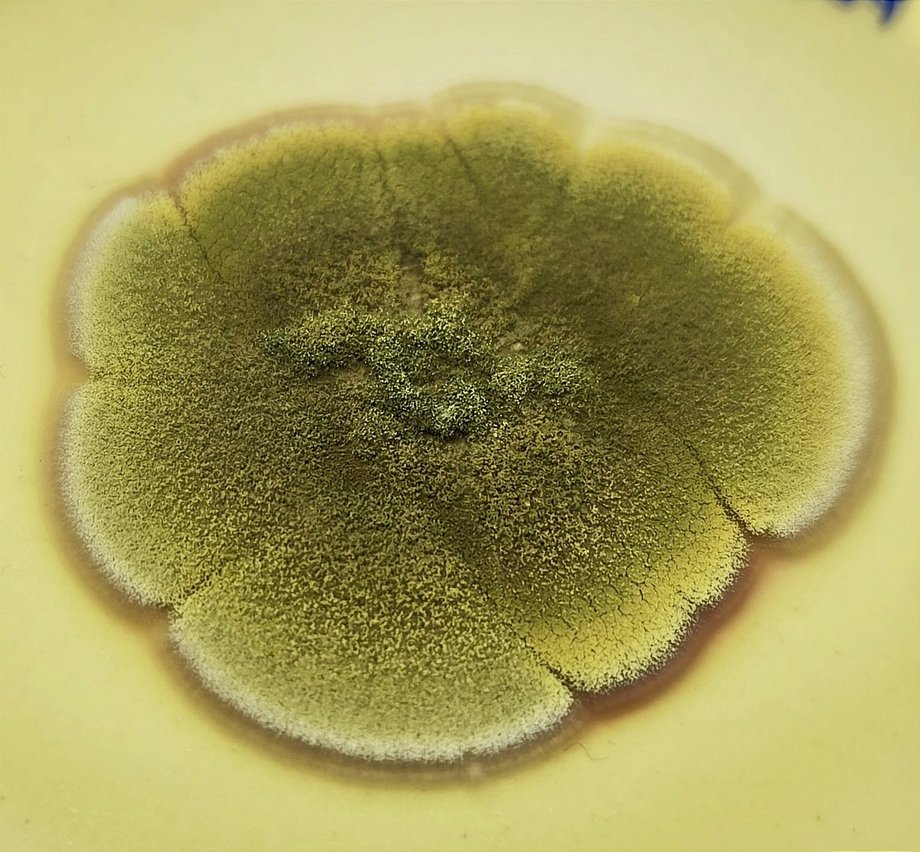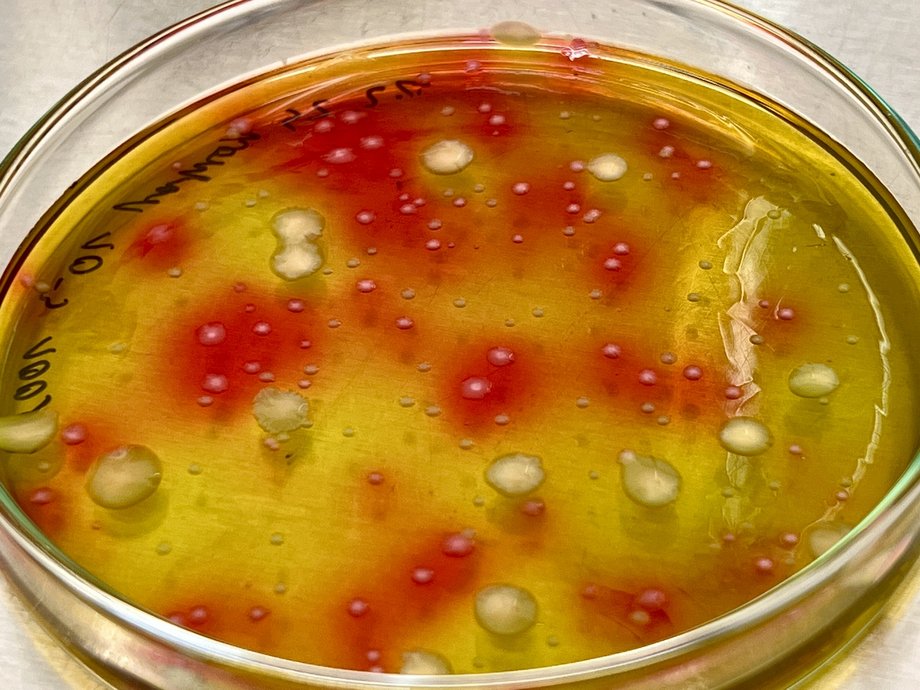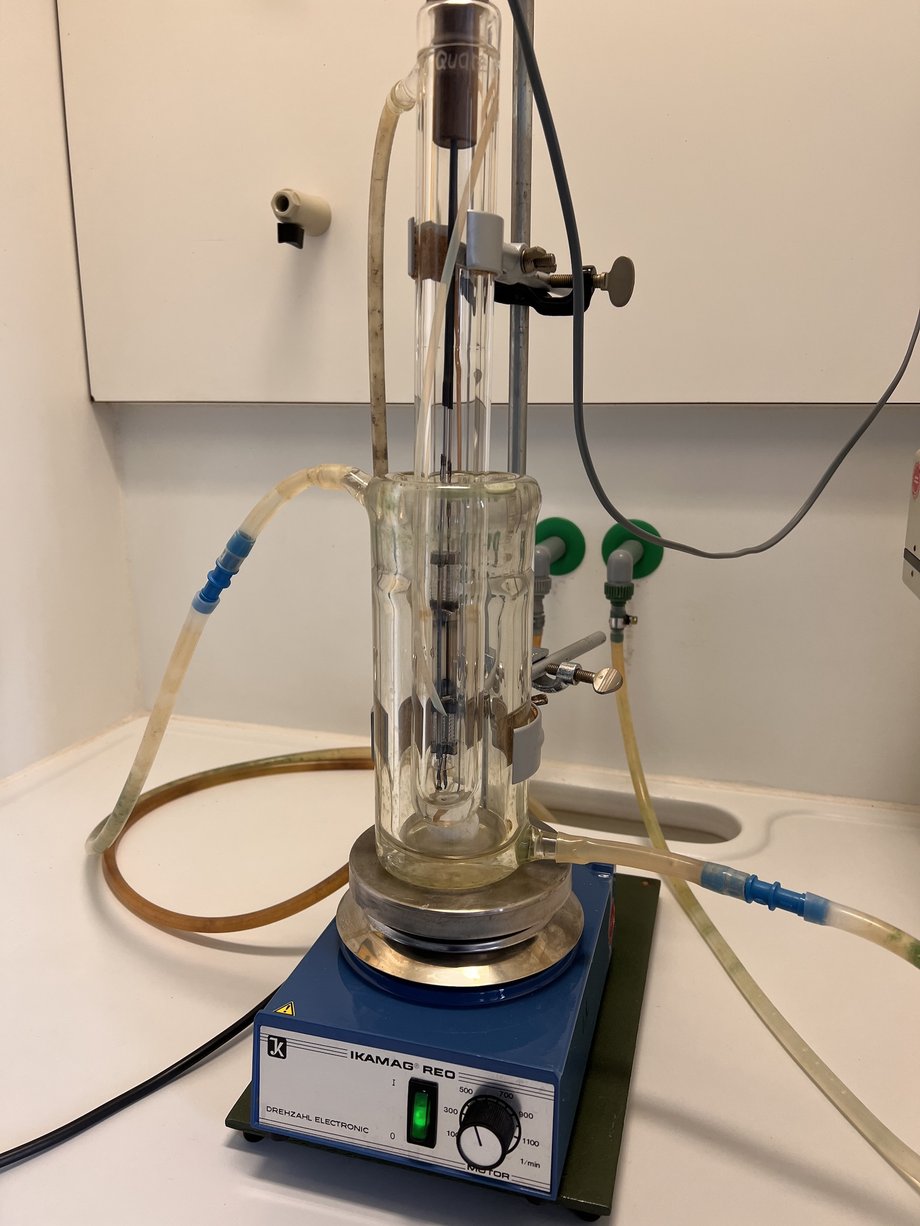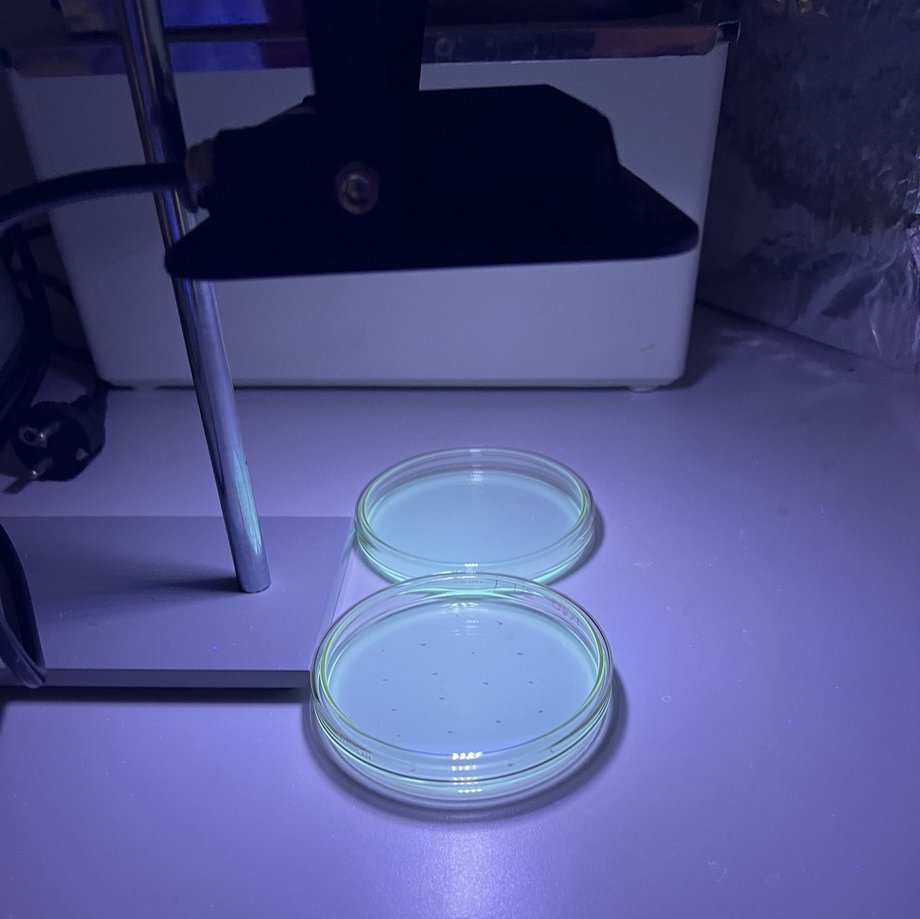Current project
The Chair of Biotechnology of Water Treatment is concerned with the development of methods and processes, e.g. for the purification of industrial wastewater, the elimination of highly persistent substances from wastewater using oxidative processes such as UV and O3 treatment of persistent substance groups (PFAS, phosphonates) and the removal of trace impurities (pharmaceuticals, endocrine active substances) from wastewater.
Furthermore, the chair is developing innovative disinfection methods based on nanosilver embedded in porous glass (MacroSpec). The reduction of biofouling in membrane bioreactors using quorum quenching and solar drinking water disinfection with combined APO are further key research areas of the chair. The determination of the hazard potential of volatile arsenic compounds from pigments in historical objects (Schweifurt Green) rounds off the Chair's research diversity. More details on our key research areas can be found further down on this page.
If you are interested in a thesis (Bachelor or Master), a study project or an internship semester, please contact us directly. In the projects listed below, there are regular opportunities for our students to write theses or other projects.
Innovative disinfection with nanosilver in porous glass
In the current ZIM project MakroSpec, various porous glass materials doped with silver are being investigated for their disinfecting effect, which is based either on contact disinfection or on the release of small amounts of silver into the surrounding medium. The aim is to develop an application technology for the disinfection of water in cooling circuits or other industrial applications, the disinfection of pool water or water for spray mist used for cooling purposes in Mediterranean regions. Possible advantages are the saving of environmentally hazardous or health-relevant chemicals and the replacement by a chemical-free system, which is low-maintenance and allows significantly longer service lives than usual. The product to be developed is based on initial laboratory tests for the solid immobilization of silver and possibly copper on porous glasses, as well as on a sintering process developed by FEW, which is to be used and further developed for the product development planned here.
Further development and application potential lies in the immobilization of titanium dioxide in the glass matrix and its subsequent use as a catalyst in a so-called "Advanced Oxidization Process" (AOP) as an alternative method for disinfection, as well as the removal of trace substances that are difficult to degrade, such as pharmaceuticals or halogenated compounds such as fluoroorganic substances.
Interested students who would like to write a student research project, bachelor's thesis and/or master's thesis in this research project should get in touch with our contact persons. We also welcome inquiries from students who would like to complete a research and/or practical semester with us at the Chair. Internships or scientific guest stays are also very welcome at our chair. If you are interested, please contact us directly:
Contact persons: Dr. Jörg Böllman & Prof. Dr. Marion Martienssen
Photochemical, photocatalytic and biological degradation of phosphonates
For many years, the Chair has been studying the abiotic and biological degradation of phosphonates such as ATMP, EDTMP, DTPMP and HEDP. The aim of the investigations is to clarify the environmental behavior of these stable complexing agents and to derive predictions about their fate in the environment. The question of potential residence time and possible degradation pathways play a major role in this. For the latter, it has always been assumed that abiotic degradation mechanisms play a primary role. In this context, the Chair is intensively investigating the photochemical and nano-photocatalytic degradation of known aminophosphonates and their degradation using LC/MS measurements. The release of other intermediates is also recorded using LC/MS measurements. The transferability of the elucidated degradation mechanisms to sunlight has already been demonstrated for the structure DTPMP.
In addition to the photochemical investigations, the Chair is also conducting intensive research into the biological degradation of various aminophosphonate structures. The Chair has developed a new standardized test procedure specifically for this purpose, with which it is now possible to examine pure cultures as well as specific mixed cultures, or wastewater sludge and biofilms specifically with regard to the biodegradability of these structures. Eight different environmental strains from activated sludge and biofilms are currently being successfully used in this test procedure and further influencing parameters are being investigated.
We are currently looking for interested students who would like to write a student research project, bachelor's thesis and/or master's thesis either in the field of photochemistry or biology of phosphonates. We also welcome inquiries from students who would like to spend a research and/or practical semester at our department. Internships or scientific guest stays at our chair are also very welcome. If you are interested, please contact our contact persons directly.
Contact persons: Dr.-Ing. Ramona Riedel & Prof. Dr. Marion Martienssen
Film on phosphonates
Reduction of membrane biofouling through quorum quenching
Membrane bioreactors (MBR) have been an integral part of municipal and industrial wastewater treatment for many years. Due to the space savings and high purification performance, MBRs are virtually irreplaceable in many areas of application. Over the last two decades, a great deal of research has been carried out in the field of membrane technology to further optimize and improve the performance of MBRs. Despite this, one of the biggest problems in MBR technology, biofouling, has not yet been fully solved.
Recent studies have shown that quorum sensing (QS), cell-to-cell communication, plays a significant role in biofouling on the membranes. Early prevention of quorum sensing through quorum quenching (QQ) could therefore lead to a significant reduction in biofouling. The aim of this project is to demonstrably reduce biofouling on the membranes of an MBR using so-called QQ techniques. To achieve this, optimal operating conditions must be determined with regard to physical (friction) and biological (quorum erasure) parameters. For this purpose, two pure cultures are specifically immobilized on special carrier materials and combined with the MBR biomass. The influence of the two pure cultures is tested with fouling experiments. If QQ is successfully established, the service life of the membrane could be sustainably extended and thus improved.
A doctoral thesis is currently being prepared at the chair as part of this project.
Contact: M.Sc. Noman Sohail & Prof. Dr. Marion Martienssen
Elucidation of degradation mechanisms of selected PFAS using AOP
The use of polyfluorinated carboxylic/sulfonic acids (PFAS) is essential in some industries despite their potential environmental hazards. PFAS are still ideal substances for fire extinguishing agents. However, the basic structure of such additives can always be traced back to perfluorooctanoic acid (PFOA) or perfluorooctanesulfonic acid (PFOS). Both PFOA and PFOS belong to the classic PFAS, which are suspected of being persistent, bioaccumulative and harmful to health. The production of both basic structures has already been discontinued in Germany and the EU. Alternative structures with the same or very similar chemical properties have not yet been able to fully replace PFOA and PFOS. In addition, little is known about their environmental behavior.
In this project, the degradation of novel PFAS is investigated using innovative APO processes such as UV, nanocatalytic UV and ozonation. The aim is to elucidate typical degradation mechanisms by means of LC/MS analyses and to investigate the influence of structural changes on abiotic degradation. Furthermore, so-called "partial cracking" experiments for potentially simplified biodegradation will also be investigated.
We are currently looking for interested students who would like to write a student research project, bachelor's thesis and/or master's thesis in this field of research. We also welcome inquiries from students who would like to complete a research and/or practical semester with us at the chair. Internships or scientific guest stays at our chair are also very welcome. If you are interested, please contact our contact persons directly.
Contact persons: Dr.-Ing. Ramona Riedel & Prof. Dr. Martienssen
Solar drinking water disinfection with combined AOP
The availability of fresh drinking water is a daily challenge for millions of people, especially in developing countries. People still die every day due to water shortages or diseases caused by fecal contamination. For this reason, disinfection processes that are as simple and cost-effective as possible are essential for many people. Hybrid decentralized water treatment technology combined with renewable energy sources is a sustainable approach for a safe water supply with lower electricity consumption. Especially for developing countries and rural communities, decentralized water treatment with sunlight offers a cost-effective, modular and uncomplicated option for self-sufficient water purification and disinfection.
The aim of this project is to develop a simple technology for decentralized drinking water disinfection. To this end, the suitability and implementation of different photochemical oxidation processes such as (UV)/TiO2 and UV/H2O2 for a decentralized treatment technology for developing countries will be investigated. In a further step, the use of sunlight as an energy source for the novel disinfection process is to be investigated and optimized. The water quality resulting from the disinfection will be tested using standardized test procedures. Finally, the transferability of the technology to Ghana is to be determined.
A doctoral thesis is currently being written at the chair as part of this project.
Contact: Abdul-Rahaman Afitiri & Prof. Dr. Martienssen
Schweinfurt green

For many cultural heritage objects, especially at the beginning of the 19th century, paint mixtures such as Schweinfurt green were increasingly used, which release hazardous arsenic-containing compounds in the form of dust and gases. However, the assessment of a potential hazard is particularly complicated. For this reason, the aim of this project "ART-Test" (Arsenic Related Toxicity Test) is to develop an integral, cross-pigment and effective methodology for identifying the hazard potential posed by volatile arsenic compounds from historical objects contaminated with Schweinfurt Green. The potential risk of released arsenic compounds from microorganisms (fungi and bacteria) involved is also addressed. Despite the large number of possible color pigments and potentially released arsenic compounds as well as the often only trace levels of contamination (< 1 ng/m³), the new method is intended to provide a rapid evaluation of the specific risk for certain groups of people (restorers, museum staff, visitors, residents of old buildings, etc.).
We are currently looking for interested students who would like to write a student research project, bachelor's thesis and/or master's thesis in the field of genome editing on fungi or on the development of a molecular biological test procedure. We also welcome inquiries from students who would like to complete a research and/or practical semester at our department. Internships or scientific guest stays at our chair are also very welcome. The place of work for this project would be Senftenberg. If you are interested, please get in touch with our contact persons directly:
Contact persons: M.Sc. Victoria Liedtke & Prof. Dr. Marion Martienssen



